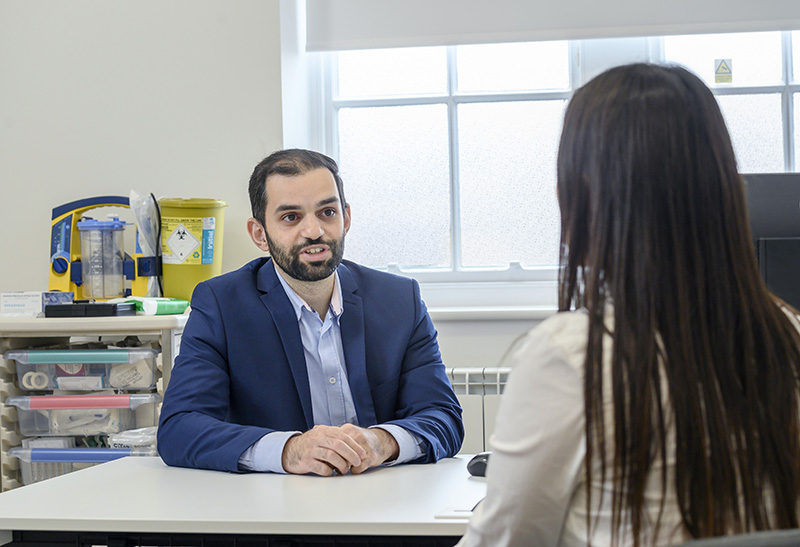Contents
Osteoarthritis

Osteoarthritis is a common condition that affects the joints, often causing pain, stiffness, and reduced mobility. While it can’t be cured, there are many effective ways to manage symptoms and maintain an active, fulfilling lifestyle.
What is Osteoarthritis?
Osteoarthritis (OA) is the most widespread form of arthritis, impacting millions of people around the globe.
It’s a degenerative condition where the protective cartilage that cushions the ends of bones within joints gradually wears down. This loss of cartilage causes bones to rub against each other, leading to joint pain, stiffness, and restricted movement.
OA can affect any joint, but it most commonly occurs in the knees, hips, hands, neck, and lower back.
While there’s currently no cure for osteoarthritis, many people manage their symptoms successfully and continue to live full, active lives.
What Causes Osteoarthritis?
Although the precise cause of OA isn’t always clear, several risk factors have been linked to its development:
- Ageing: The likelihood of developing OA increases with age due to accumulated joint wear and tear.
- Joint injuries: Previous trauma to a joint, such as fractures or ligament damage, can increase the chance of developing OA in that joint later in life.
- Repetitive strain: Occupations or activities that place repeated stress on specific joints can speed up cartilage deterioration.
- Being overweight: Excess body weight puts added pressure on weight-bearing joints like the knees and hips, contributing to the onset of OA.
- Genetics: A family history of osteoarthritis can increase your risk.
- Joint shape or abnormalities: Some individuals are born with joints that don’t align properly, making them more prone to early cartilage wear.
- Certain jobs: Careers that involve heavy lifting or frequent kneeling can also be a contributing factor.
Recognising the Symptoms
Symptoms of osteoarthritis tend to develop gradually and can vary in severity. Common signs include:
- Aching joints: Persistent pain, especially after activity or long periods of rest.
- Joint stiffness: Most noticeable in the morning or after being inactive for a while. This usually eases once you start moving.
- Reduced flexibility: A decreased ability to move the joint through its full range of motion.
- Swelling: Some joints may appear enlarged or puffy, often due to inflammation or fluid build-up.
- Grinding sensation: You may hear or feel a crackling or grating noise as the joint moves.
- Tenderness: The joint may feel sore or painful to touch.
How is Osteoarthritis Diagnosed?
When you see your GP, they will likely ask about your symptoms, lifestyle, medical background, and any family history of arthritis. A physical examination will help them assess joint mobility, tenderness, and swelling. X-rays are often used to confirm the diagnosis and to evaluate the extent of joint damage.
Managing Osteoarthritis
Although OA can’t be reversed, various treatments can reduce pain, enhance joint function, and support continued mobility.
Non-Medication Approaches
- Healthy weight: Losing excess weight helps relieve pressure on the joints and can significantly ease symptoms.
- Exercise: Regular, gentle activity can help keep joints flexible and muscles strong. Activities like walking, swimming, or yoga are particularly helpful.
- Physiotherapy: A physiotherapist can create a tailored exercise programme aimed at strengthening muscles, improving range of motion, and reducing discomfort. They can also teach you how to protect your joints during daily tasks.
- Hot and cold treatments: Applying heat can help loosen stiff joints, while cold packs may reduce swelling and discomfort.
- Mobility aids: Devices like braces, walking sticks, or walkers can provide support and reduce strain on affected joints.
Medication Options
- Over-the-counter pain relief: Medications like paracetamol or ibuprofen can ease mild to moderate pain.
- Prescription medications: In more persistent cases, your GP might recommend stronger pain relief.
- Topical treatments: Creams or gels applied to the skin over the joint can provide targeted pain relief.
Other Treatment Possibilities
- Joint injections: Corticosteroid injections can offer temporary relief from pain and inflammation.
- Surgery: When symptoms severely impact quality of life, joint replacement surgery — most often in the hips or knees — may be considered.
Living Well with Osteoarthritis
Osteoarthritis doesn’t have to stop you from enjoying life. By taking a proactive approach and working closely with your GP and our experienced physiotherapy team, you can manage your condition, stay mobile, and maintain your independence.
Arranging To Visit A Private GP

To discuss any symptoms that could be an indication of arthritis make an appointment with one of our private GPs. Appointments are available to everyone and can often be booked for the same day. There is no need to be registered with our hospital, or live locally.
If you have insurance which covers a GP visit, we can in most cases invoice the insurer directly. Where you are paying directly, the cost for a 30 minute consultation is £100.
Any additional costs will always be discussed. They could apply if you are referred for an MRI scan, or to a consultant, or for other agreed decisions to support your health.
21 May 2025


